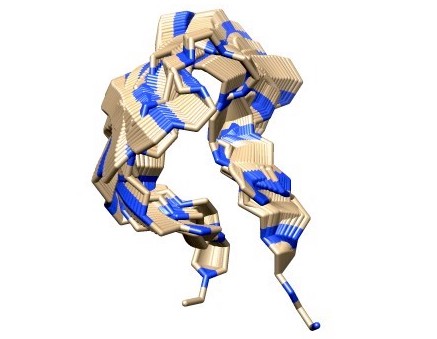|
We develop tools for modeling protein structures and their interactions. This includes novel methods for:
- Protein-protein docking. Predicting how two or more proteins can interact from their unbound components can reveal new insights into the basic principles of molecular recognition. Please check our FRODOCK server based on an improved version of our Fast Rotational DOCKing method. Given the 3D coordinates of two interacting proteins, the server generates many potential predictions of how they could interact very efficiently.
- Protein loop prediction is essential in protein structure modeling, structural refinement, antibody design, and ion channel modeling. Our RCD+ server is a fast and accurate loop-closure modeling tool. Accurate all-atom loop predictions and ensembles can be easily generated in only a few minutes.
- Coarse-grained potential. Knowledge-base ORientational Potential (KORP) is a statistical potential derived from known protein structures by classical Boltzmann inversion that only depends on the pairwise relative orientation and position of three backbone residue atoms. We successfully applied it to protein and loop modeling (KORP), protein-ligand (KORP-PL), and stability prediction upon mutation (KORPM).
|
 |

